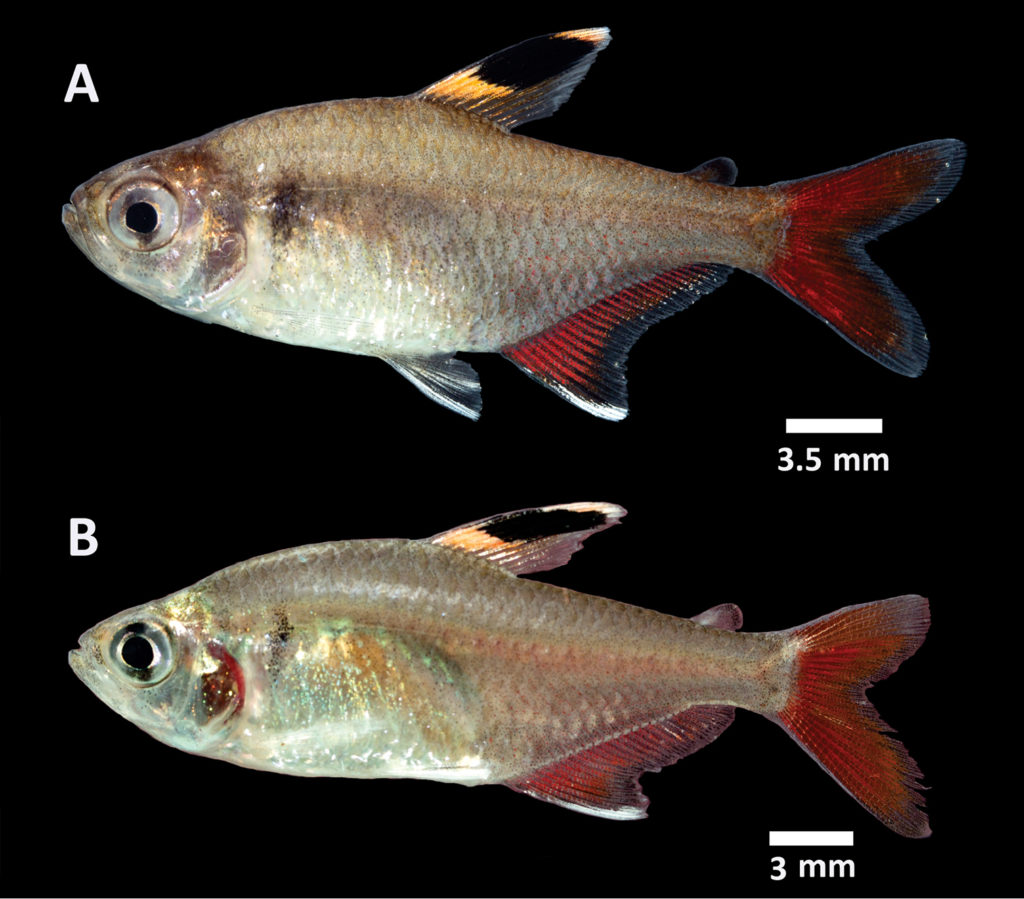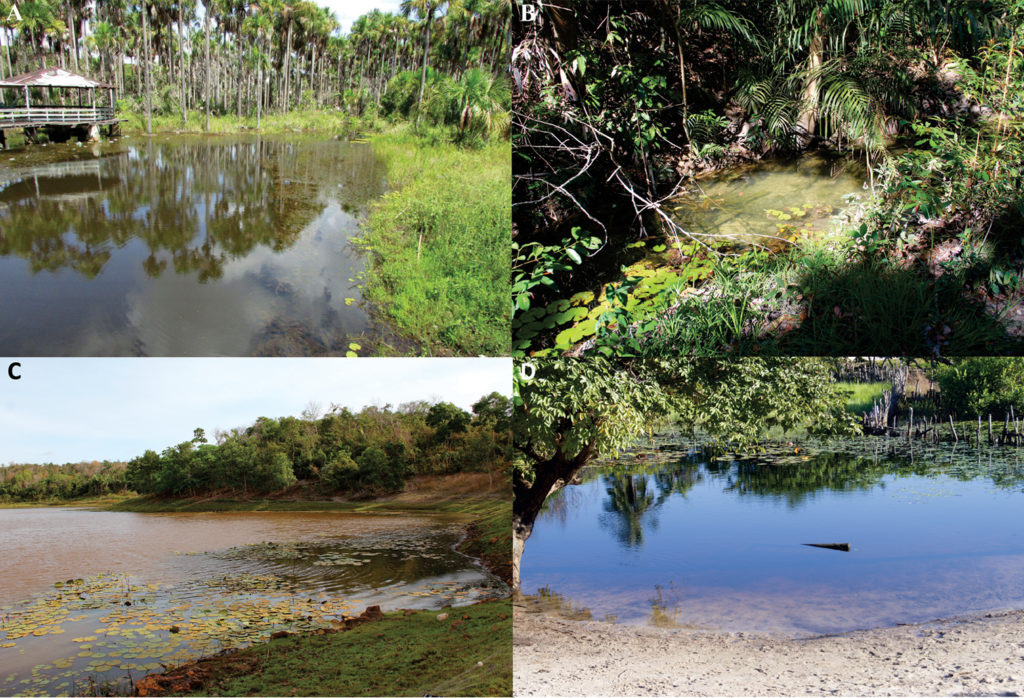
Two freshly-collected live paratypes of the newly-described Hyphessobrycon piorskii, collected in the Muni River Basin, Maranhão State, Brazil. CC BY 4.0
A colorful new tetra, Hyphessobrycon piorskii, could one day capture our hearts. An introduction to the new species was recently released in an open-access description published in ZooKeys and is available online for free. To read the full article by authors Erick Cristofore Guimarães, Pâmella Silva De Brito, Leonardo Manir Feitosa, Luís Fernando Carvalho-Costa, Felipe Polivanov Ottoni, click on A new species of Hyphessobrycon Durbin from northeastern Brazil: evidence from morphological data and DNA barcoding (Characiformes, Characidae).
Why It’s a New Species
This new species represents another chapter in our understanding of a group which taxonomists and ichthyologists refer to as Hyphessobrycon sensu stricto (perhaps suggesting that this currently large genus of 150 or so species may one day be broken up). H. piorskii was discovered in the Munim and Preguiças river basins, two coastal river basins of the Maranhão State, northeastern Brazil, and is currently only known from these locations.
The description of this new species is well supported by current genetic methodologies. The data suggests there is possibly a close relationship to a sister group of tetra species, specifically H. bentosi (Ornate Tetra), H. socolofi (Lesser Bleeding Heart Tetra), H. megalopterus (Black Phantom Tetra), H. erythrostigma (Bleeding Heart Tetra), and H. pyrrhonotus (Flameback Bleeding Heart Tetra), however the authors caution that this proposed relationship is, at this time, speculative at best.
According to the paper, H. piorskii exhibits some telltale characteristics that may aid in identification. “The new species Hyphessobrycon piorskii sp. n., promptly differs from most congeners except by species of Hyphessobrycon sensu stricto by the presence of a dark brown or black blotch on dorsal fin (vs. absence), no midlateral stripe on the body (vs. presence) and Weberian apparatus upward horizontal through dorsal margin of operculum (vs. downward).” Furthermore, with the exception of exception to H. bentosi and H. hasemani, H. piorskii can be distinguished from Hyphessobrycon sensu stricto “by possessing an inconspicuous vertically elongated humeral spot,” compared to other configurations. If you’re still stuck in making an identification, the authors conclude that “The new species differs from H. bentosi by the absence of extended and pointed dorsal and anal-fin tips (Figures 1, 2) [vs. extended and pointed dorsal and anal-fin tips]; and from H. hasemani by the dorsal-fin black spot shape, which is located approximately at the middle of the fin’s depth, not reaching its tip [vs. extended along all the fin, reaching its tip in adults] and by presenting tri to unicuspid teeth in the inner row of premaxillary and dentary [vs. pentacuspid teeth].”
Hyphessobrycon piorskii In The Wild

Collecting sites of Hyphessobrycon piorskii sp. n. A. stream at the Anapurus municipality B. stream at Mata de Itamacaoca C. stream at Mata de Itamacaoca D. stream at Mata Fome, Barreirinhas municipality (photographed by Felipe Ottoni). CC BY 4.0
Perhaps of most interest to aquarists, should they ever find themselves lucky enough to care for this species, are the author’s ecological notes:
“Hyphessobrycon piorskii sp.n. lives in shallow well-oxygenated streams with transparent waters flowing over different types of substrates. The streams where H. piorskii sp. n. specimens were collected varied from 0.90 to 10 meters wide, with a maximum depth of 1.60 meters. They possessed moderate water currents (0.1–0.7 m/s), with clear, sandy substrates with pebbles, mud, leaf litter, and submerged logs, often also presenting aquatic macrophytes. Hyphessobrycon piorskii sp. n. was found near shore among aquatic vegetation, tree roots and fallen logs. Other species found at both sites were Anablepsoides vieirai Nielsen, 2016, Apistogramma piauiensis Kullander, 1980, Astyanax sp., Cichlasoma cf. zarskei, Copella arnoldi (Regan, 1912), Crenicichla brasiliensis (Bloch, 1792), Hoplias malabaricus (Bloch, 1794), Megalechis thoracata (Valenciennes, 1840), Nannostomus beckfordi Günther, 1872, and Synbranchus marmoratus Bloch, 1795. Gut contents of C&S specimens contained algae and disarticulated arthropod remains.”
Reference:
Guimarães EC, De Brito PS, Feitosa LM, Carvalho-Costa LF, Ottoni FP (2018) A new species of Hyphessobrycon Durbin from northeastern Brazil: evidence from morphological data and DNA barcoding (Characiformes, Characidae). ZooKeys 765: 79-101. https://doi.org/10.3897/zookeys.765.23157






Trackbacks/Pingbacks